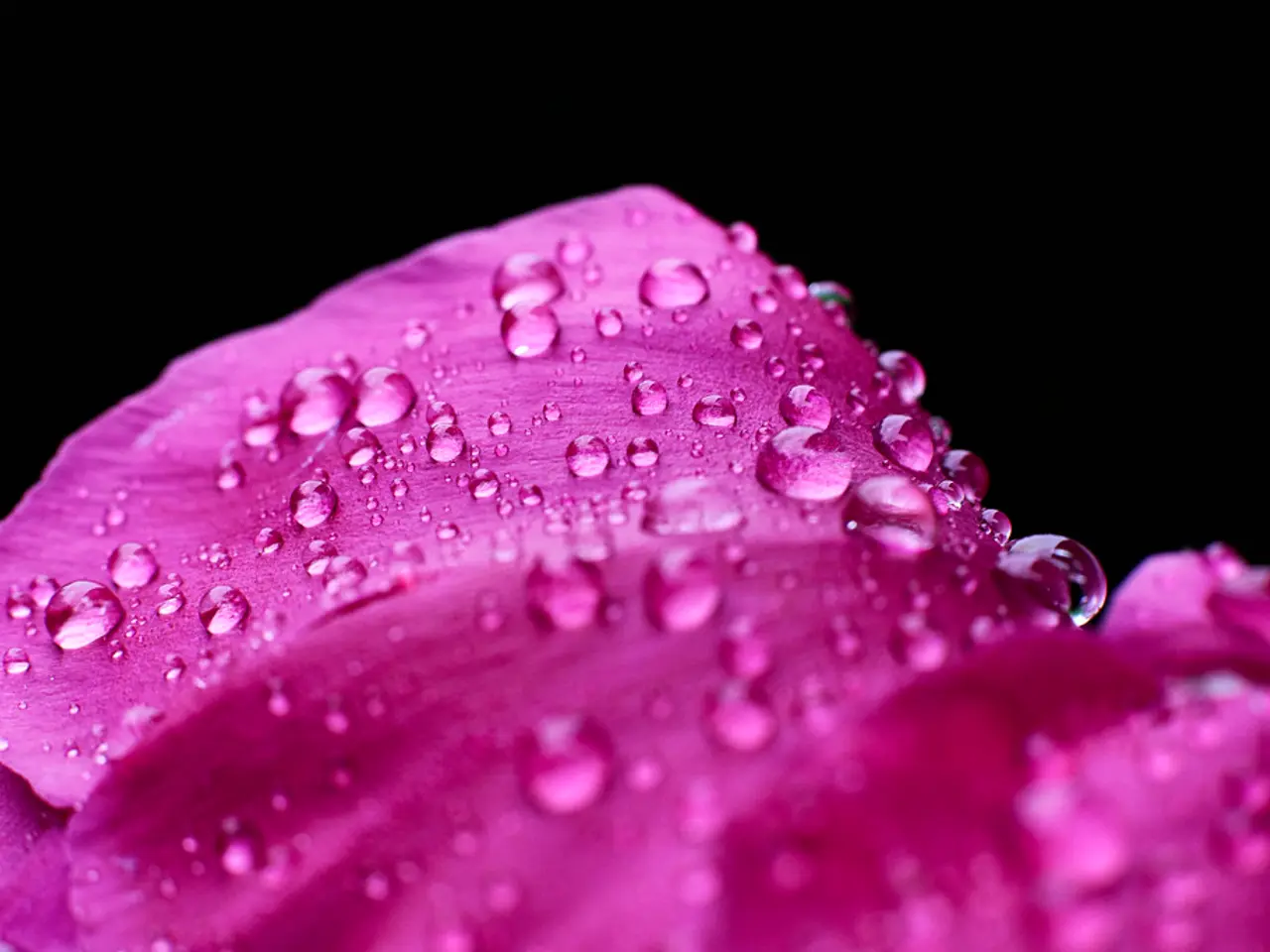Watering Regularity for Orchids: Comprehensive Insights
Orchids, with their vibrant blooms and elegant appearance, are a popular choice for many home gardeners. However, understanding their watering needs is crucial to ensure their health and longevity.
The velamen, a thin membrane surrounding the orchid roots, plays a significant role in water absorption and nutrient uptake. When the velamen appears dry and silvery, it's a sign that the orchid is thirsty and in need of a drink. Conversely, newly watered velamen should be green or mottled.
The watering frequency for orchids varies depending on the type and season. Generally, most orchids prefer to be watered once a week in summer and once every ten days to two weeks in winter [1][2]. However, it's essential to note that different orchid types have specific needs.
For instance, Phalaenopsis orchids, common houseplants, do well with about weekly watering during active growth [5]. On the other hand, Catasetinae orchids, which have distinct growth cycles, require watering only after roots reach 3–6 inches in spring. During summer growth, they need watering two to three times a week due to rapid development [3].
Root colour is another practical sign. Grey roots indicate the orchid needs water, while green roots show sufficient moisture [2]. Other signs that an orchid needs watering include a dry medium (bark or moss), slightly wrinkled or limp leaves (especially for Phalaenopsis), and shriveled pseudobulbs for species that have them.
Overwatering is a common mistake that can lead to root rot. It's best to check the roots and potting medium regularly rather than relying on a fixed schedule alone [4]. Adjust the frequency based on your local climate, pot type, and orchid variety.
When an orchid is nearing bud break or is in bloom, it should be watered more frequently. However, it's crucial to monitor the moisture in the potting medium to avoid overwatering.
The choice of potting medium also impacts watering frequency. For example, pine bark nuggets or sphagnum moss retain water well, requiring less frequent irrigation. Conversely, if a less water-retentive medium such as charcoal or clay pellets is used, the plant will need more frequent irrigation.
A standard medium for orchids should contain a mix of fir bark, fern fiber, perlite, gravel, and sphagnum moss. Mounted orchids need more frequent waterings than those grown in containers.
In conclusion, understanding the watering needs of your orchids is key to their health and blooming success. Regularly checking the velamen, roots, and potting medium will help you maintain the perfect balance for your orchids.
References: [1] Orchid Care: Watering Your Orchids, HGTV. (n.d.). Retrieved from https://www.hgtv.com/design/outdoors/gardens/orchid-care-watering-your-orchids
[2] Orchid Care: Watering, Orchid Care Central. (n.d.). Retrieved from https://www.orchidcarecentral.com/orchid-care/watering.html
[3] Catasetinae, Orchid Care Central. (n.d.). Retrieved from https://www.orchidcarecentral.com/orchid-care/catasetinae.html
[4] Overwatering Orchids, Orchid Care Central. (n.d.). Retrieved from https://www.orchidcarecentral.com/orchid-care/overwatering.html
[5] Phalaenopsis, Orchid Care Central. (n.d.). Retrieved from https://www.orchidcarecentral.com/orchid-care/phalaenopsis.html
Editor's Note: Amy Draiss, Digital Community Manager, and Melanie Griffiths, Editor in Chief, provided valuable insights for this article. Amy Grant, a professional chef and gardener for 30 years, writes about culinary gardening and offers practical tips for growing orchids in your home.
By regularly checking the velamen, roots, and potting medium, you can ensure a balanced watering schedule for your orchids, supporting their lifestyle within your home-and-garden. For instance, Phalaenopsis plants prefer weekly watering during active growth, while Catasetinae orchids require watering only after roots reach 3–6 inches in spring.





